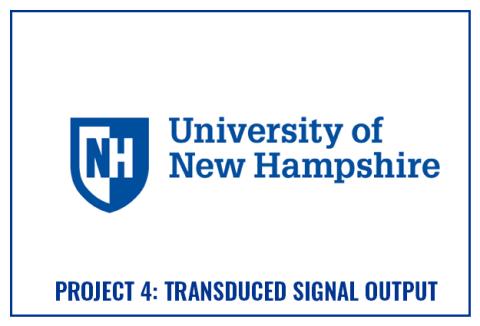
Dr. Jeffrey Halpern
University of New Hampshire
Focus
Demonstrating a non-faradaic surface impedance sensing paradigm to detect binding events without tags (e.g. optical, electrochemical) for use as a continuous real-time sensor in situ of cell growth.
Major Industry Challenge
Currently, the transduction methods of in-line electrochemical protein biosensors require tagging the surface motif with an active electrochemical signal to monitor analyte response with voltammetry or amperometry. The ability to electrochemically monitor binding events without an active electrochemical tag would expand the diversity of analytes and ease of measurement for point-of-need process analytical capabilities in the advanced biomanufacturing industry.
Hypothesis
Electrochemical Impedance Spectroscopy (EIS) can be used to monitor unique binding-unbinding events of analytes with non-tagged surface-bound proteins, and the signal can be amplified based on the conformational change of the surface-bound analyte-responsive polymer.
Project Goals
Electrochemical Impedance Spectroscopy (EIS) to monitor unique binding-unbinding events of analytes with non-tagged surface-bound proteins, and the signal can be amplified based on the conformational change of the surface-bound analyte responsive polymer. We approach this with three specific subgoals: (1) Develop methods to account for EIS signal drift in sensor applications; (2) monitor binding-unbinding events between target and surface proteins (e.g., REs, ARPs); and (3) demonstrate proof-of-principle continuous in-line sensing of insulin and IL-6 from cell growth effluent.
Major Outcomes
We expect to be able to measure IL-6 and insulin in-line, continuously and accurately, over the period of 8 days at intervals of 1 hour (192 measurements) within 5% error to traditional ELISA sensors taken every two days (4 measurements). Through spiking of the effluent, we should be able to see an increase and decrease of the target analyte. Control experiments will determine the accuracy of EIS measurements and ability to distinguish target analytes from confounding factors. While initially tested with MSCs and stem cell-derived pancreatic islets, other cell lines (e.g. CHO) can be explored at UNH’s bioreactor hub. Any sensor used in-line that returns media (instead of removing/replacing media) will need to be sterilized and treated to remove endo- and mycotoxins prior to use.
